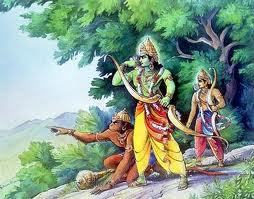Apara ekadashi Vrat is Coming on 4th June 2013 on Apara Ekadashi.
About Apara Ekadashi Vrat
Jyeshtha during the waning phase of the moon (Krishna Paksha). This date
usually falls in the month of May or June according to the Gregorian
calendar. Followers of Apara Ekadashi believe that this vrat would help
in eliminating their sins and henceforth, would finally assist them in
attaining Moksha, or salvation. Apart from this, fasting on this
Ekadashi is also known to bring in name and fame to the observer. Apara
Ekadashi is also celebrated as Achala Ekadashi, Bhadrakali Ekadashi,
Viashakha Vadi Ekadashi and Jalakrida Ekadashi in various parts of
India. Scroll through the following lines to find out the story of Apara
Ekadashi vrat and how to observe it.
Apara Ekadashi Vrat Vrat Katha(Story)
Lord Sri Krishna said, “Oh great king ! the name of this meritorious Ekadashi is Apara Ekadashi. Whoever fasts on this holy day becomes famous all over the universe. Even such sins as killing a brahman, a cow, or an embryo, blasphemy, or having sex with another man’s wife are completely eradicated by observing Apara Ekadashi. People who bear false witness, a person who falsely or sarcastically glorifies another, one who cheats while weighing something on a scale, one who invents his own scripture, one who cheats others, one who is a false astrologer, a cheating accountant, or a false Ayurvedic doctor. All these are surely as bad as persons who bears false witness, and they are all destined for hellish punishments. But simply by observing Apara Ekadashi, all such sinners become completely free of their sinful reactions. Warriors who fall from their kshatriya-dharma and flee the battlefield go to a ferocious hell. Even such a fallen kshatriya, if he observes fasting on the Apara Ekadashi, is freed of that great sinful reaction and goes to heaven. That disciple is the greatest sinner who, after receiving a proper spiritual education from his spiritual master, turns around and blasphemes him. Such a so-called disciple suffers unlimitedly. But even he simply observes Apara Ekadashi, can attain to the spiritual world.
“Oh King ! for the benefit of all humanity I have thus described to you this the importance of the Apara Ekadashi. Anyone who hears or reads this description is freed from all kinds of sins.
Observance of a vrat on Apara Ekadashi is said to
clean a person from all the sins committed and also freeing from the
various bonds in life, thereby achieving Moksha. A devotee practicing
Apara Ekadashi is likely to receive merits equal to performing various
religious and spiritual acts. To name a few, these include performing
three ritual baths in Pushkar Kshetra in Kartika masam, performing
ritual bath in Prayag in the month of Magha masam at Mesha Sankraman,
worshipping Lord Shiva in Varanasi, offering tharpan to forefathers at
Gaya, performing ritual bath in Gautami River at Simha Sankraman, and so
on. People also believe that one can become famous and popular through
various commendable actions.
In northern regions, like Punjab, Haryana and places of Jammu and
Kashmir, the ritual is known as Bhadrakali Ekadashi and is considered
one of the most propitious days for worshipping Goddess Bhadra Kali.
This is an important festival for the Aryan Saraswat Brahmin sect. On
the other hand in Orissa, this vrat is referred to as Jalakrida
Ekadashi, which is dedicated to Lord Jagannath in Puri. The Apara
Ekadashi vrat is observed from sunrise till the sunrise on the next day.
While Apara Ekadashi vrat calls for a strict fasting, people also opt
for observing a partial fast. In such a case, they are allowed to
consume fruits and milk only. Most importantly, food containing rice and
grains should be avoided. In some parts of India, Sabudana Khichadi is
eaten by those observing a partial vrat.
Apara ekadashi Vrat Images









+of+festivalasia+Apara+Ekadashi.jpg)


